Salisbury Cathedral – A Most Beautiful Church
While I am not a religious person, I do greatly appreciate the beautiful art and architecture that religion can inspire, none more so than the awesome Gothic cathedrals of western Europe. These wonders in stone often took hundreds of years to complete; Cologne took 600 years. As architectural tastes changed over the centuries, the results were buildings with a mishmash of styles that usually did not produce an aesthetic whole. Salisbury Cathedral is the dramatic exception to the rule – completed in only 38 years, the blink of an eye in terms of medieval construction, it is simply one of the most beautiful buildings in the world. Please join me in exploring this paean to a God that had real meaning and presence to the ordinary people of medieval England who built it.
I am in Salisbury on a tour of Britain sponsored by Canadian military travel experts Liberation Tours and while we will be visiting many notable battle sites, there is also time to explore less martial places, like Salisbury Cathedral. In the morning we had a fantastic tour of Stonehenge led by noted British archaeologist Francis Pryor. Now we have been dropped off and given free time to explore Salisbury. How’s that for a double header of great places?
Our first stop is not at the cathedral, but rather at the Chapter House, a venerable Salisbury inn and pub that is built on the site where some of the stone for the cathedral was quarried. I love these traditional old British eateries with their locally brewed beer and specialty meat pies.
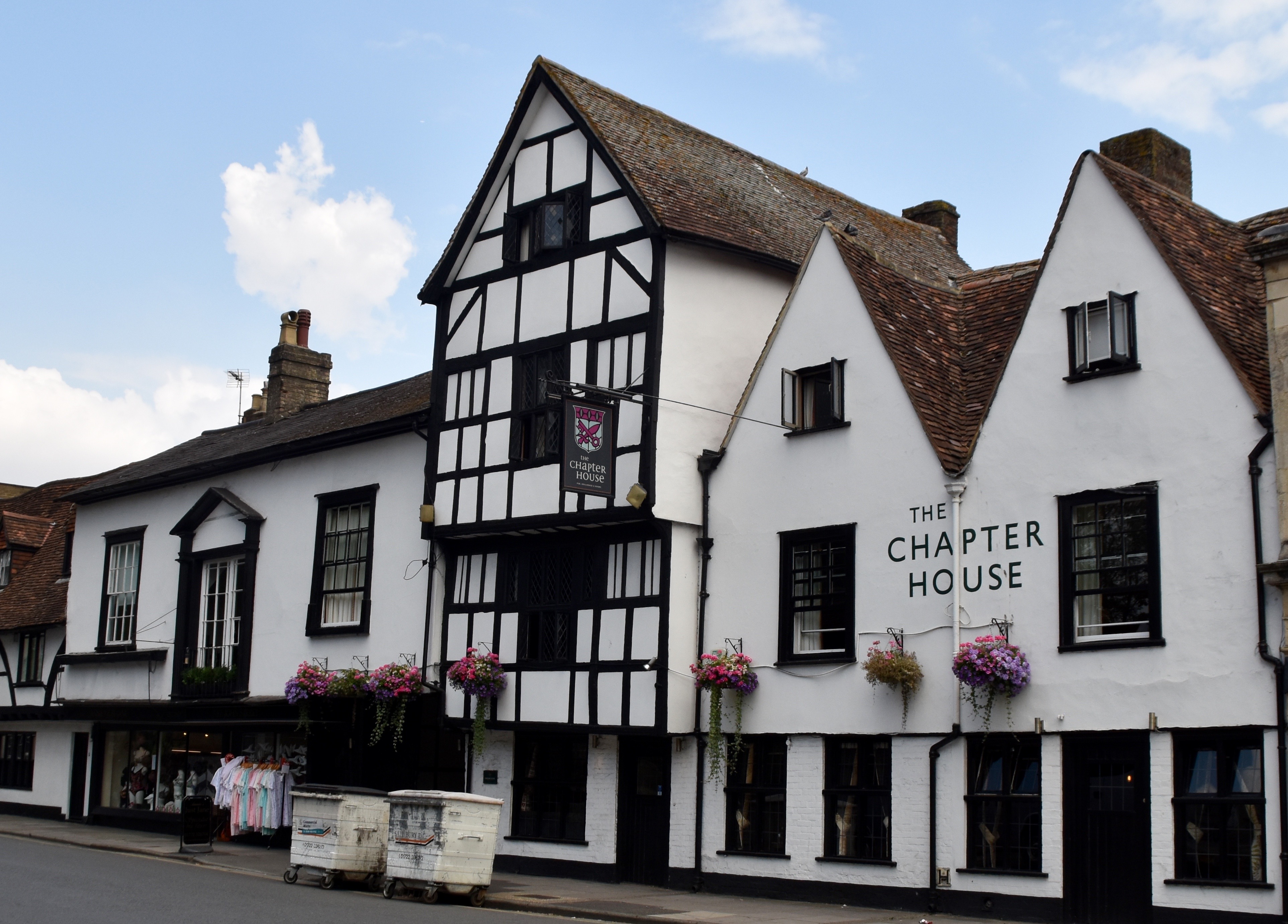
Fortified with food and drink, we (my wife Alison, sister Anne and friends Robert and Janet Purdy) set off for the cathedral through a gate to a narrow lane where there are a couple of interesting plaques. Along one side of the lane is the Bishop Wordsworth Grammar School where Nobel laureate William Golding taught for 17 years. It made me wonder what he really thought of his pupils given the horrific nature of some of the characters in the survivalist novel Lord of the Flies.
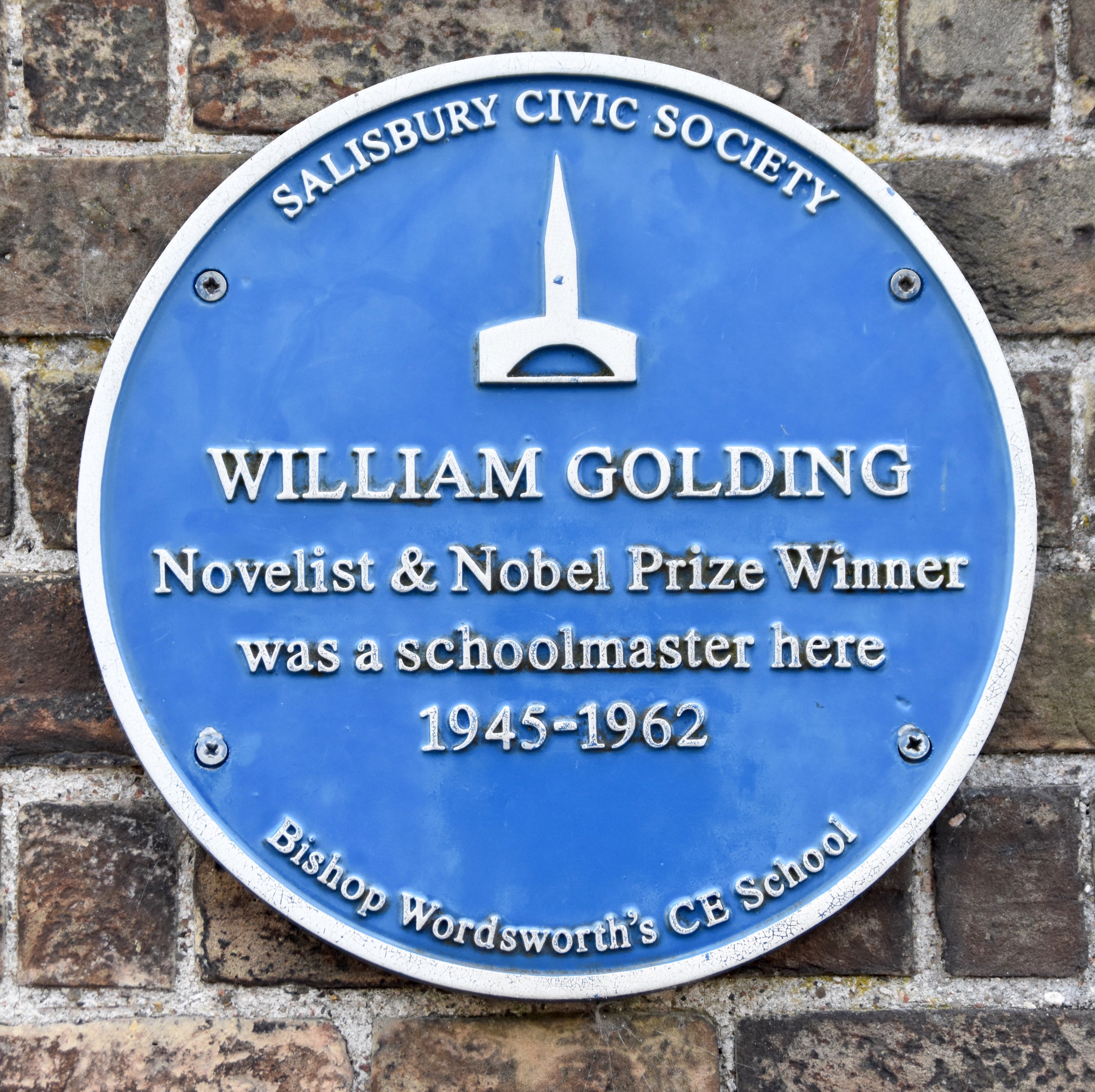
Almost directly across the lane was this cheery notification. They were a farmer, a stone mason and a tailor who had the misfortune of maintaining their Protestant beliefs during the time that ‘Bloody’ Mary Tudor succeeded her brother Edward VI on the English throne and attempted, by torture and murder to revert the realm to Catholicism. Didn’t work. Spicer is reputed to have said, as the flames licked at his body, “This is the most joyful day of my life.” Ain’t religion grand.
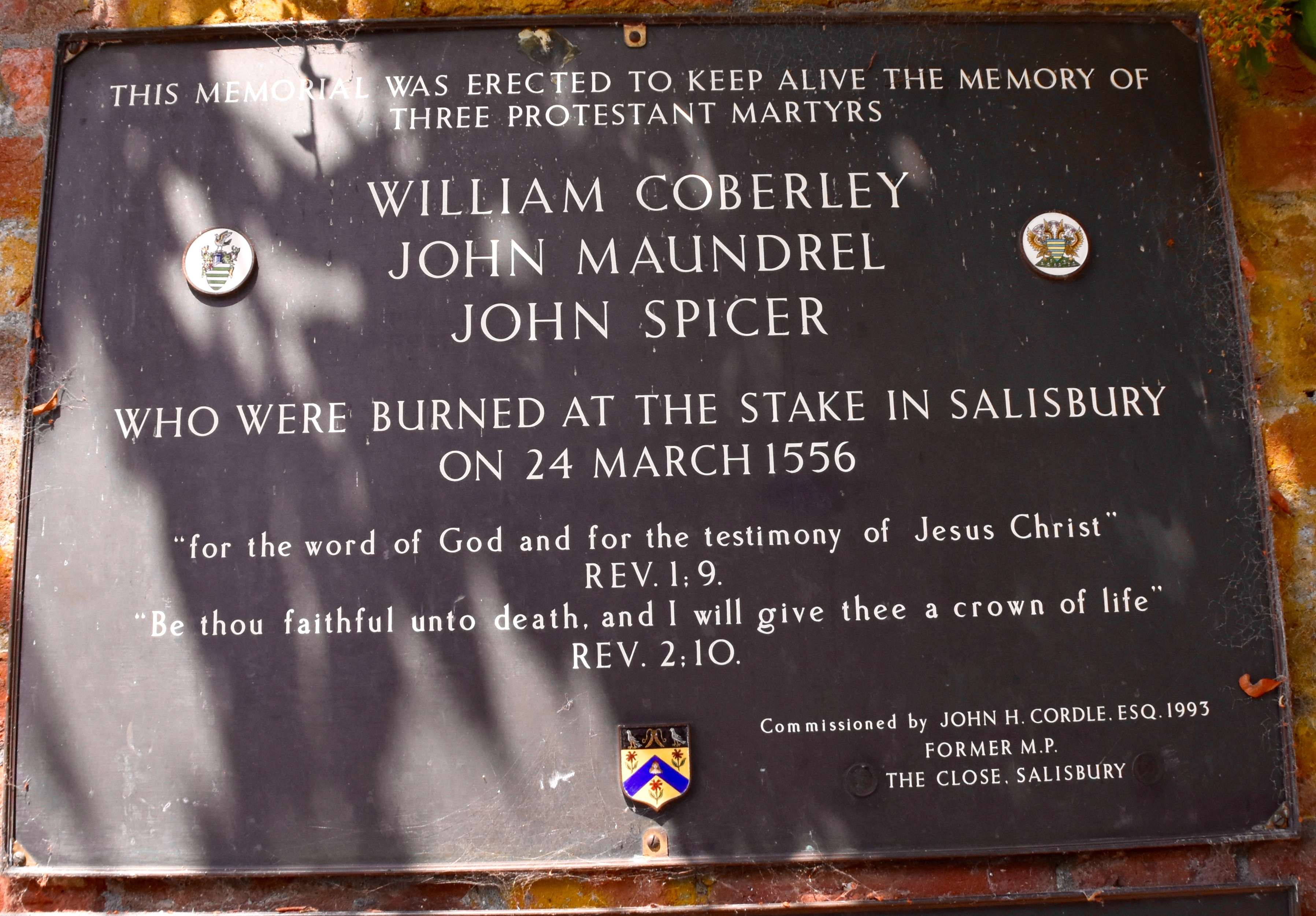
Salisbury Cathedral
By coincidence we had visited the Tate Gallery in London only a few days before and there had seen one of John Constable’s famous paintings of Salisbury Cathedral. It did not prepare me for the real thing.
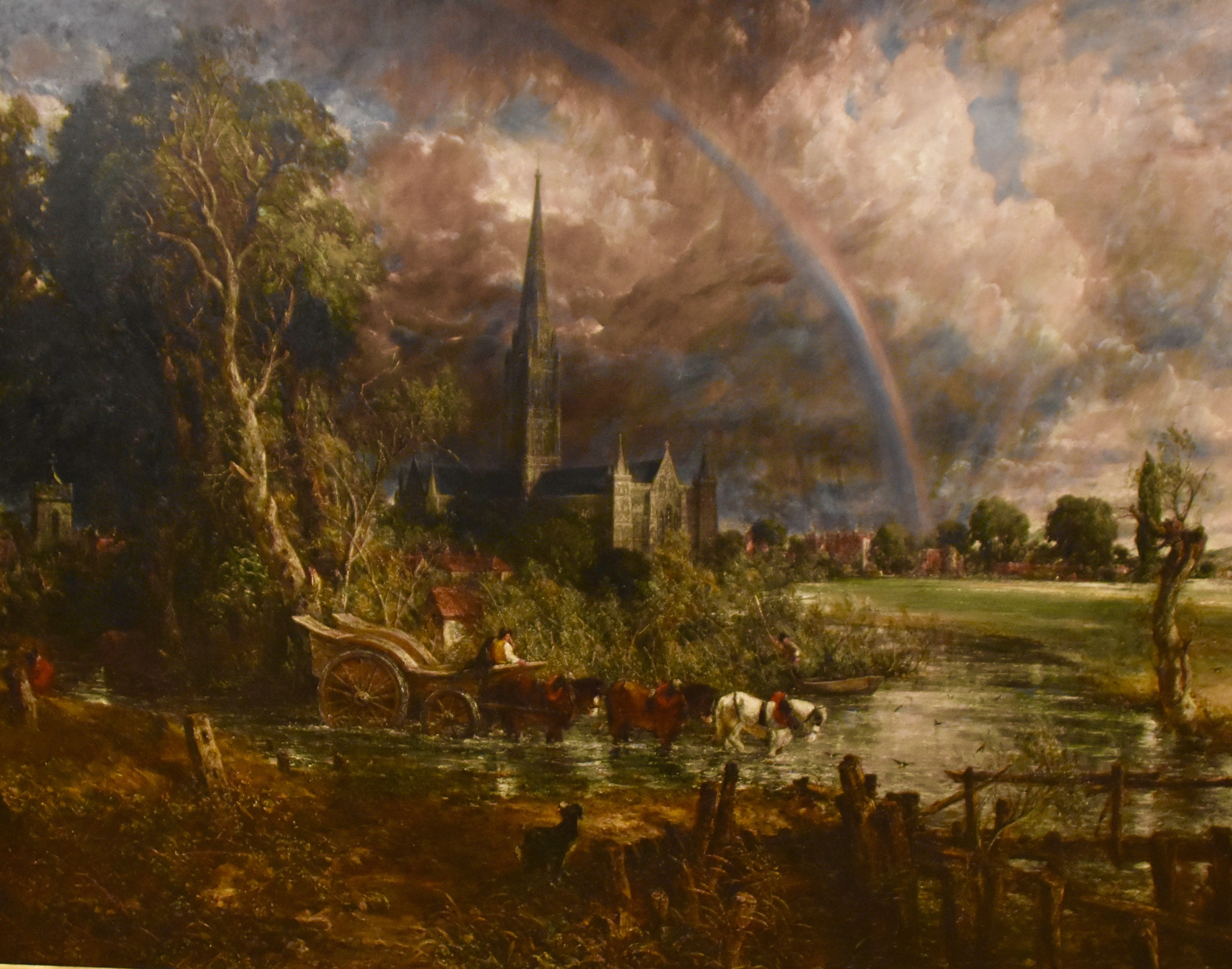
Coming out of the lane you come suddenly upon one of the great sights in ecclesiastdom. I should have had my wide angle lens with me, but didn’t so I’ve used this public domain photo instead. Tell me that is not stunning.
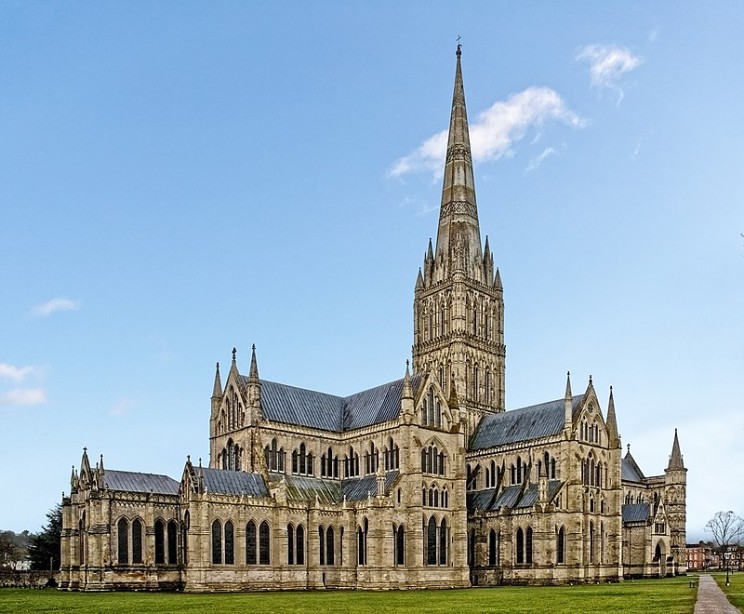
Salisbury Cathedral has a number of components that make it, for me, the most beautiful church in Britain. The first is that it has the largest cathedral close in Britain, which means the opposite of what the word close usually connotes. In fact, it is an 80 acre open space all around the cathedral that lets the viewer get a true appreciation of the size and architectural unity of the building. It was this large close that allowed Constable to paint it again and again from the outside the actual town.
Secondly, Salisbury Cathedral has the tallest spire in Britain and second only to Strasbourg of all Gothic cathedrals. The full height of 123 metres (403 feet) is the equivalent of a modern 40 story building – and this was all done without the aid of modern cranes, Can you imagine how long it would take a stonemason to get to work while topping off the spire? Also, having only one spire it is positioned perfectly over the meeting of the nave and the transept giving it an architectural completeness that is exceedingly rare.
This is a building that demands to be walked around and examined from all angles to truly appreciate its grandeur. The front face would be a wonder even on its own. Look how the spire rises exactly in proportion to the two miniature spires on each side.
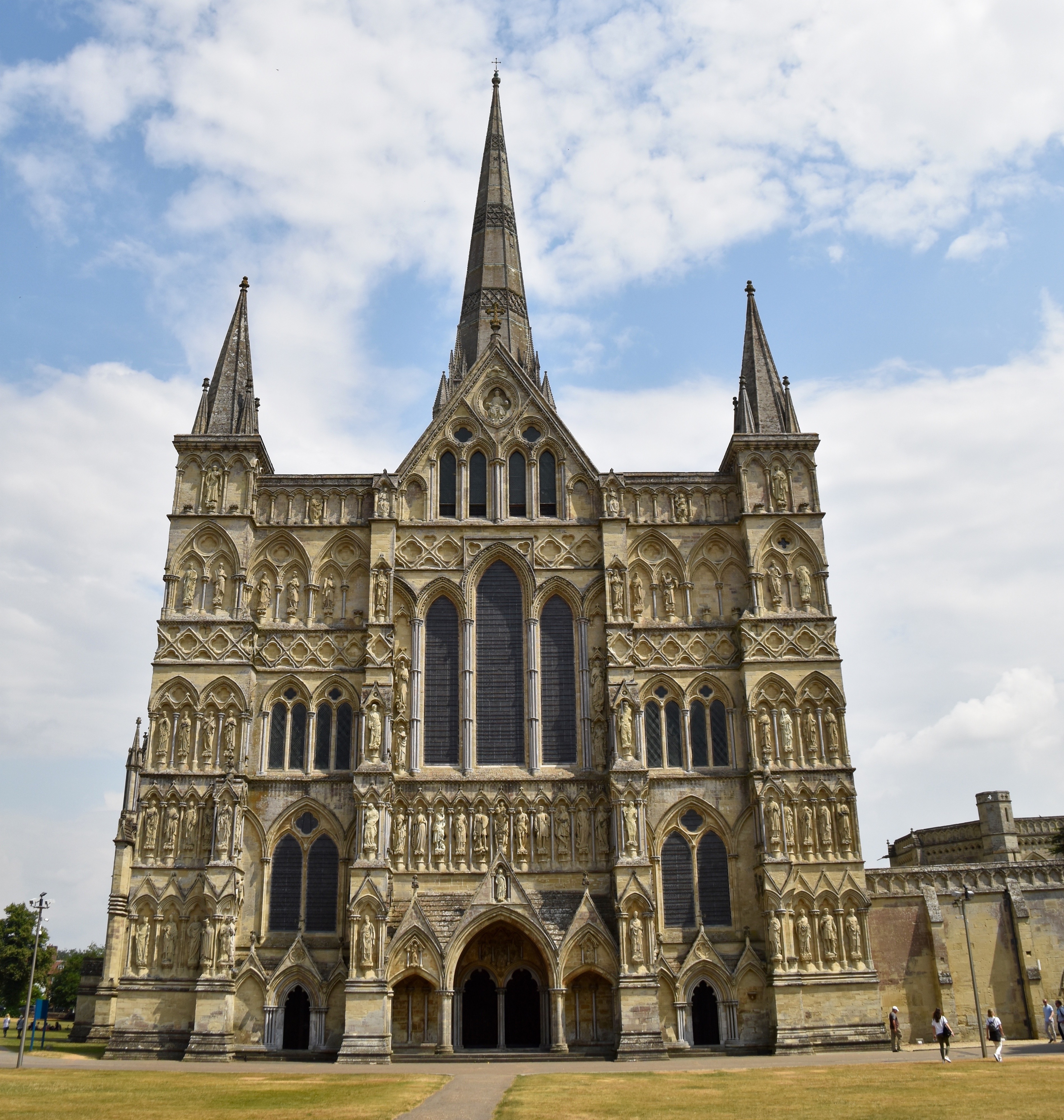
Walking up to the entrance you get a chance to look up in wonder at the facade. Except for the statues, each side is perfect copy of the other. This type of symmetry was well known to medieval architects to be particularly eye-pleasing and in the case of Elias of Wereham who was the master designer behind Salisbury Cathedral, you might say “He nailed it!” This despite the fact he was trained as a lawyer and not an architect.
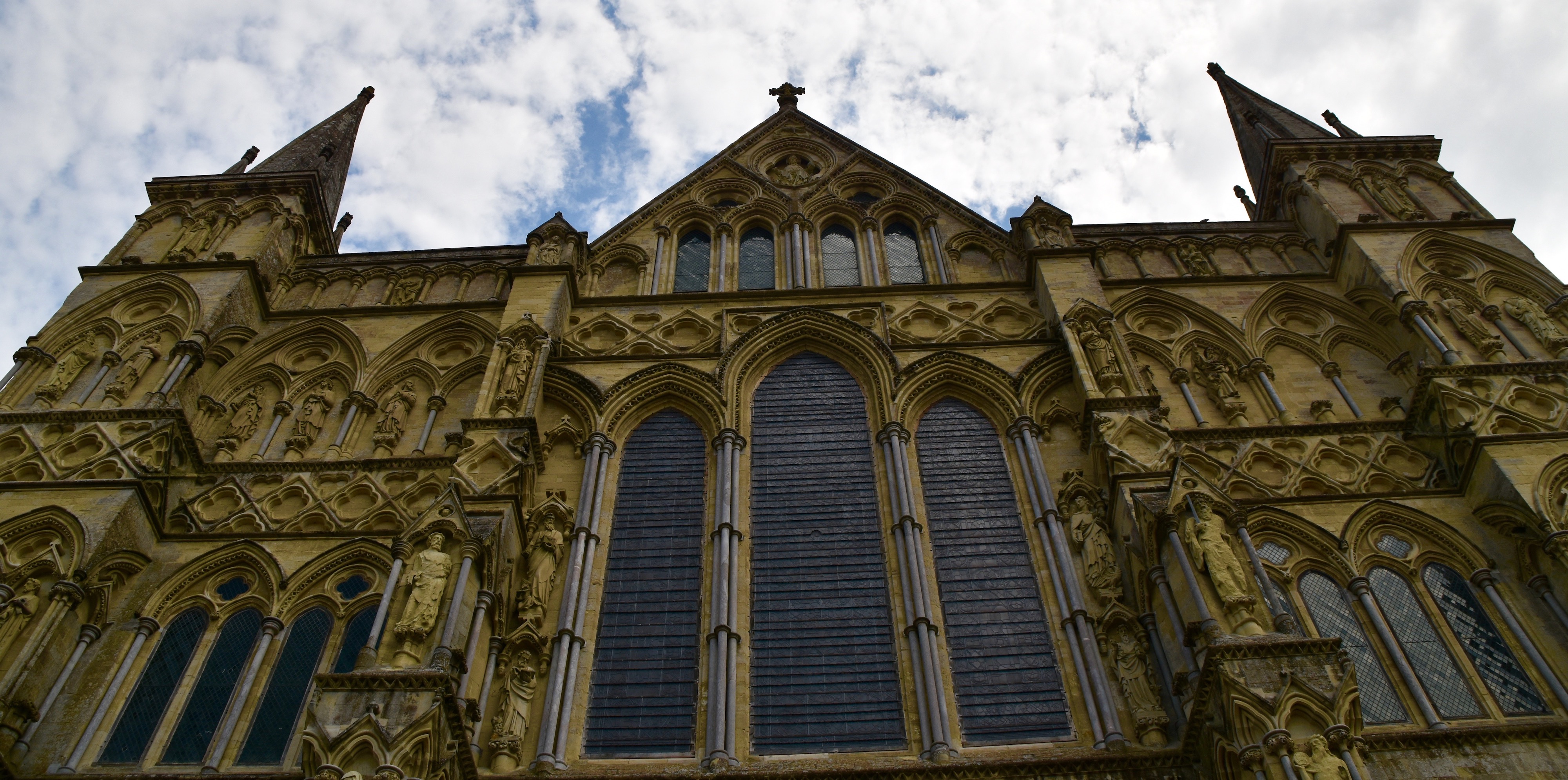
Once you get your fill of just ogling the overall style of Salisbury Cathedral, you can turn your attention to details, like the 79 statues that can be found on the front facade in seven tiers. Alas, only seven date from the earliest days of the building and some were added as recently as the 21st century. Most however date from the nineteenth century and are the works of renowned Victorian sculptor James Redfern. Each saint or holy figure is usually associated with some specific artifact, gesture or method of martyrdom that made them readily identifiable to medieval audiences, although today you would need to be a real life Robert Langdon to know who they are.
It’s kind of a fun exercise to try to match the symbols with the saints, so I’ll do it for these eleven that you can see right over the front entrance.
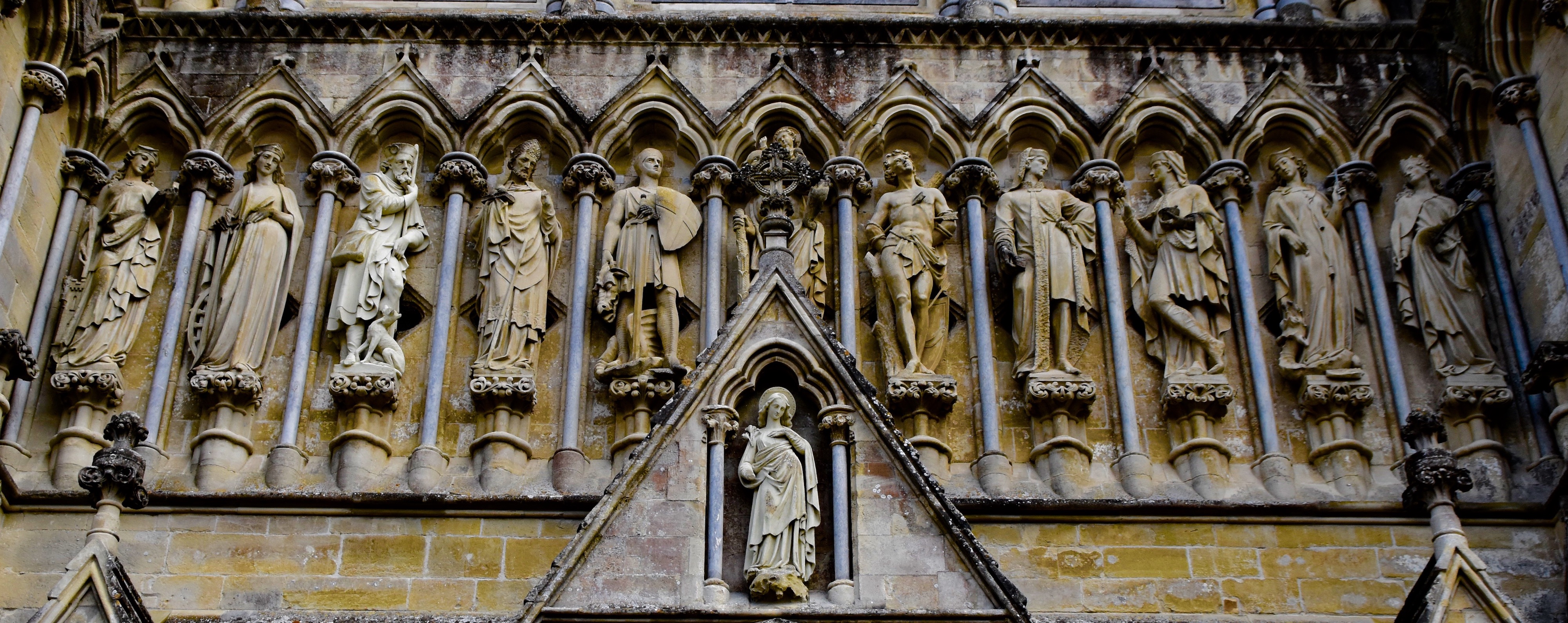
From left to right you have St. Barbara with a tower at her side. She was locked up in this by her pagan father for becoming a Christian. He later beheaded her and for that was struck by lightning. Next we have St. Katherine with the wheel upon which the Romans attempted to break her, without success, but beheading did the trick. Then, freshly cleaned, is St. Roch who has with him the dog that licked his plague ravaged body and cured him. Fourth up is none other than jolly old St. Nicholas who performed many miracles including reconstituting to life three children who had been butchered, pickled in brine and were about to be sold as pork to unwitting consumers. Now that’s the mother of all Christmas presents! Fifth in line comes the very easily recognizable St. George in his armour with the head of the dragon in his right hand. You get a medal if you can identify the figure in the middle. It is St. Christopher, almost always shown with the young Christ on his shoulders, carrying him across a stream. No. seven in line is one of my all time favourites – St. Sebastian who never seems to be non-plussed about the arrows that are riddling is body. Then comes a rather obscure saint, the Arab St. Cosmas who holds a small medicine box in his hand, indicating his profession as a doctor and miraculous healer. With St. Cosmas is his brother St. Damian who holds a mortar and pestle, also signifying his knowledge of the healing arts. The penultimate spot goes to St. Margaret of Antioch who was swallowed by the dragon you can make out at her feet, but regurgitated because he didn’t like the taste of the cross he swallowed with her. Last and certainly not least is St. Ursula who was an English saint. She had the misfortune to lead 11,000 virgins on a trip to Europe only to have all of them, including herself, killed by the Huns. She is certainly is not the patron saint of travel agents.
OK, with that little exercise over, let’s go inside. Here’s the floor plan of Salisbury Cathedral.
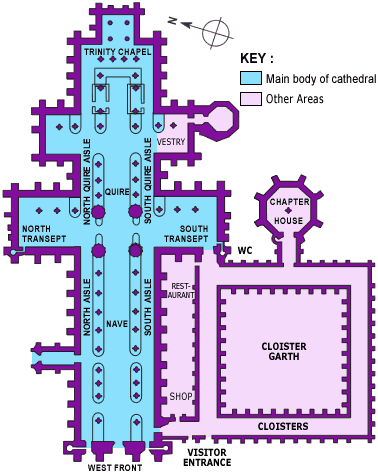
This is view of the unadorned ceiling with the characteristic ribbed vaults, the highest in Britain. The flight of doves is a modern addition.
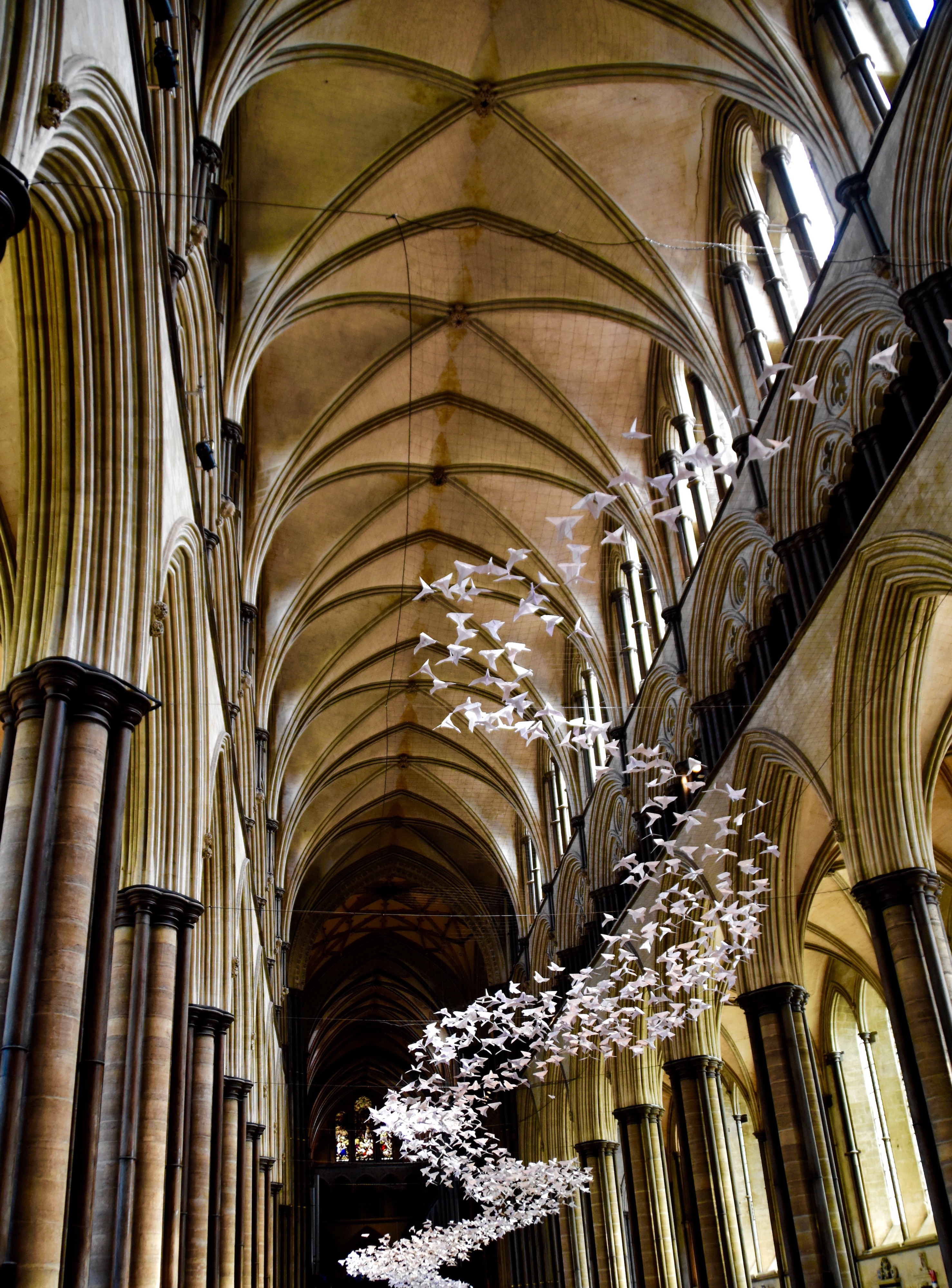
The choir is the largest and among the oldest in Britain.
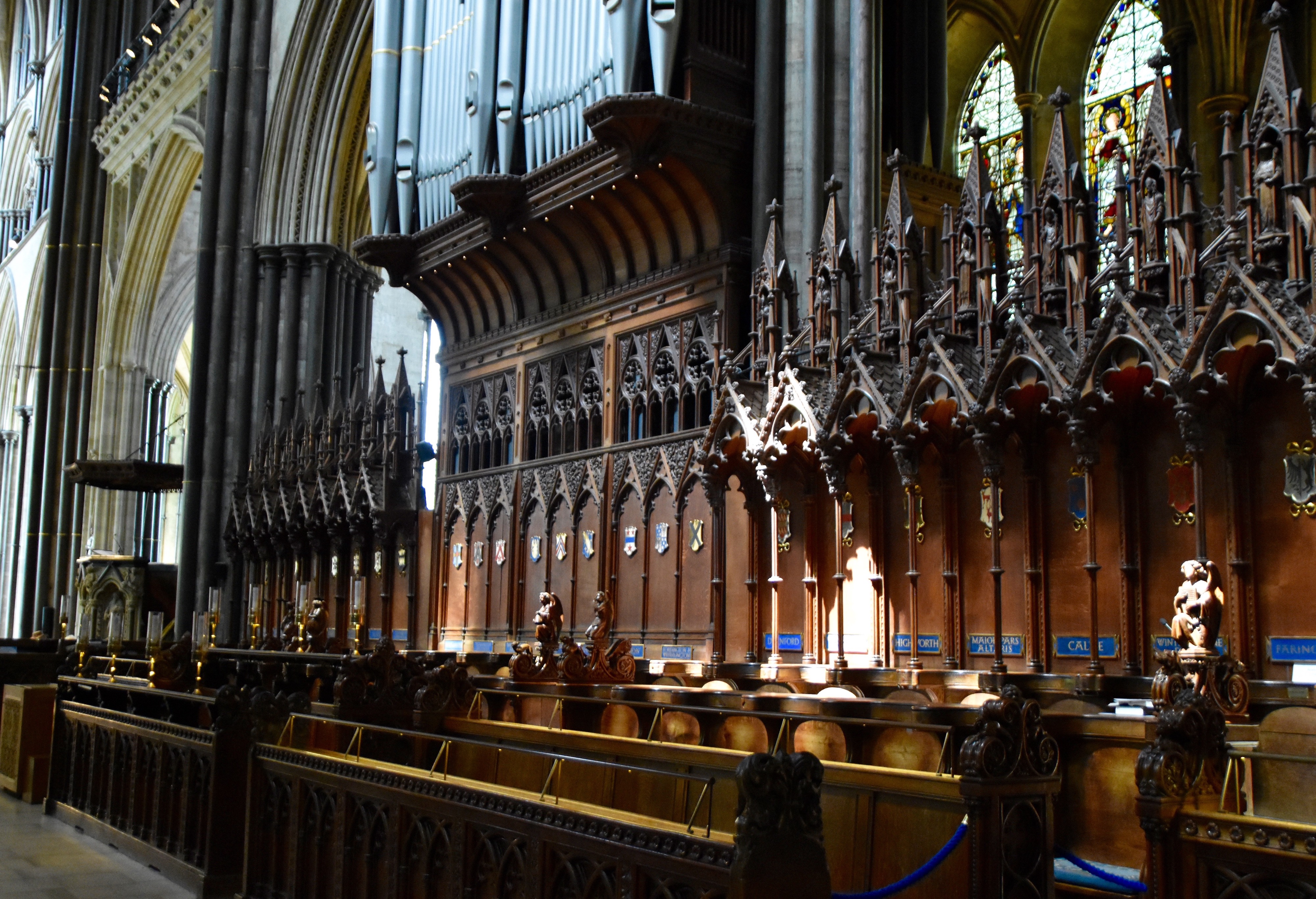
There are a couple of things you might to surprised to find in Salisbury Cathedral. Such as the oldest working clock in existence, although a few other places claim that as well. Regardless, this device has been telling the time accurately since the 14th century. Just how it does that is not readily apparent as it has no dial face.
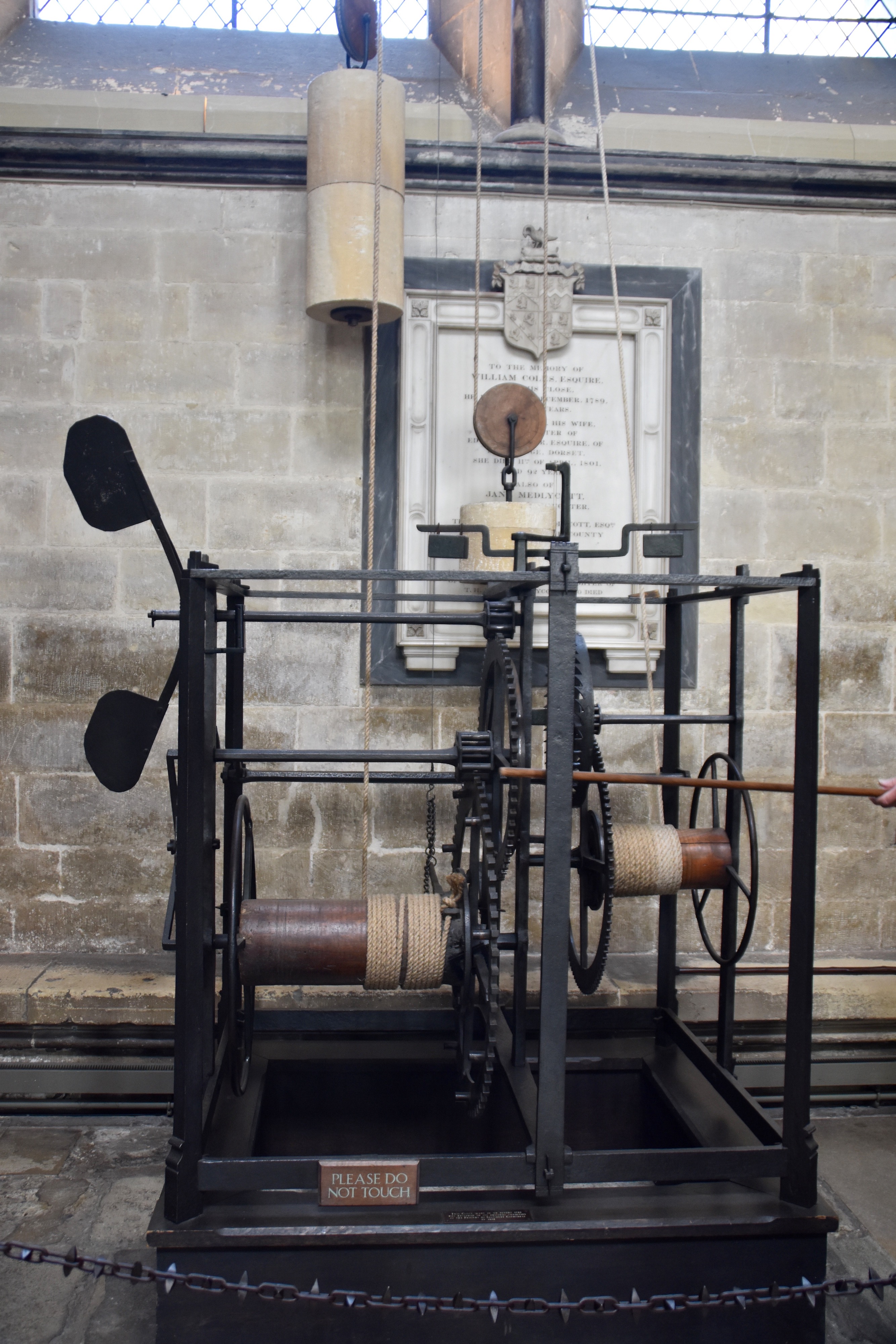
You expect to find medieval and early Protestant burials or interments in places like Salisbury Cathedral, such as these finely done Elizabethan era effigies of Sir Richard Mompesson and his wife Katherine.
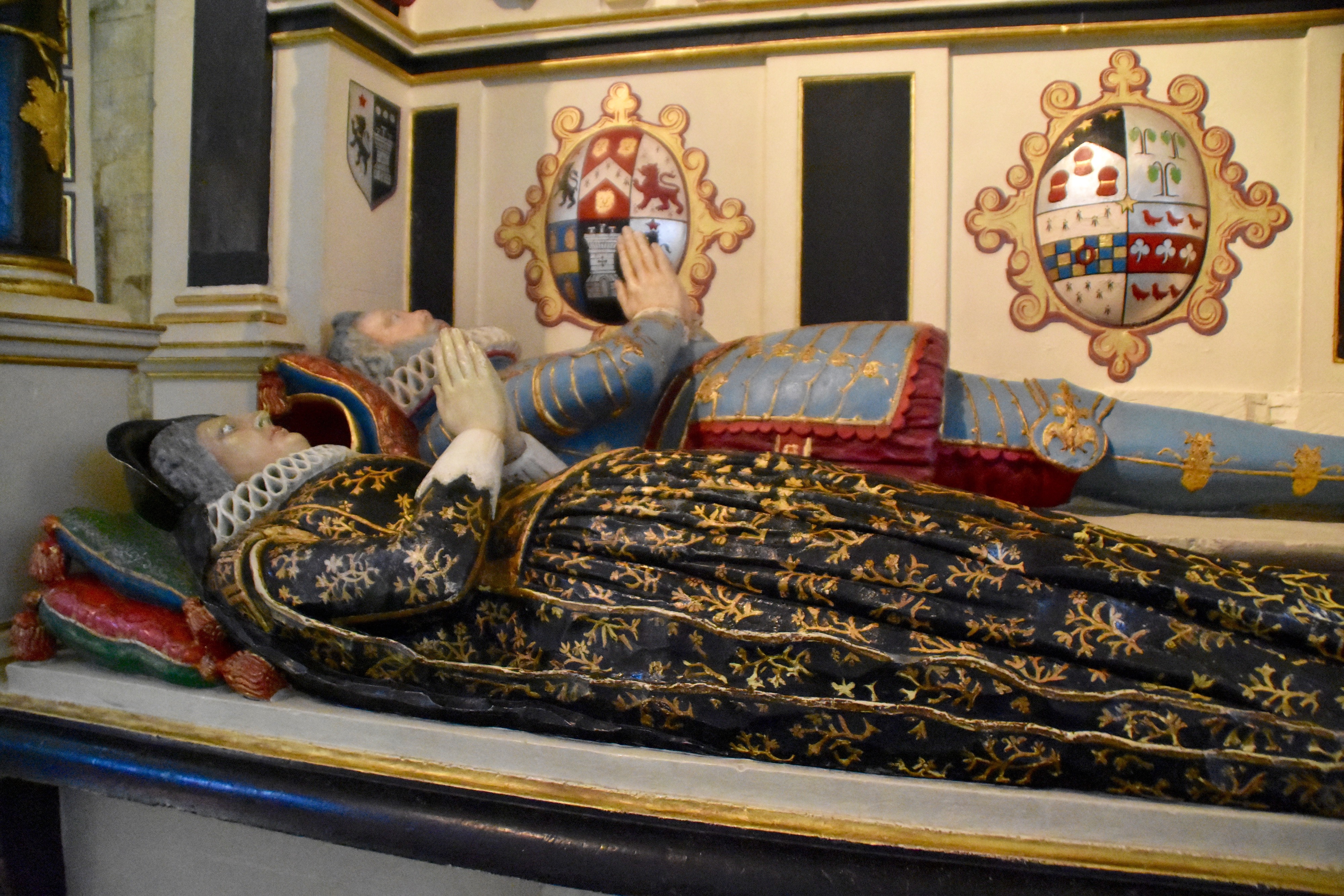
What you don’t expect is to find famous personages from modern times such as this slab under which former British Prime Minister Edward Heath is buried. The architect of Britain’s entry into the EU, he would roll over in this grave if he knew that his party was also the one behind Brexit.
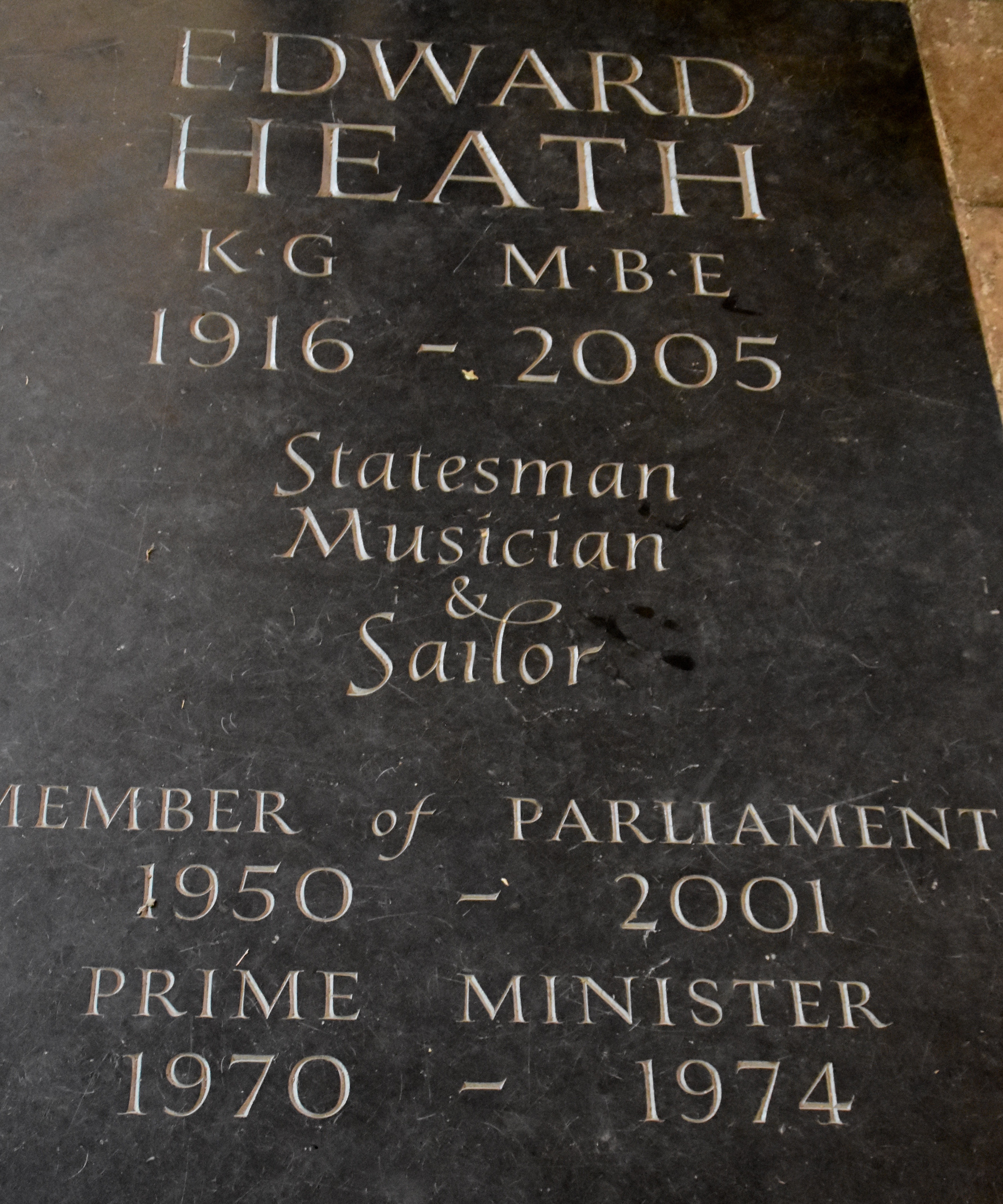
Adjoining Salisbury Cathedral are the largest cloisters in Britain and walking these peaceful corridors will take you to one final destination that houses one of the greatest treasures in Europe.
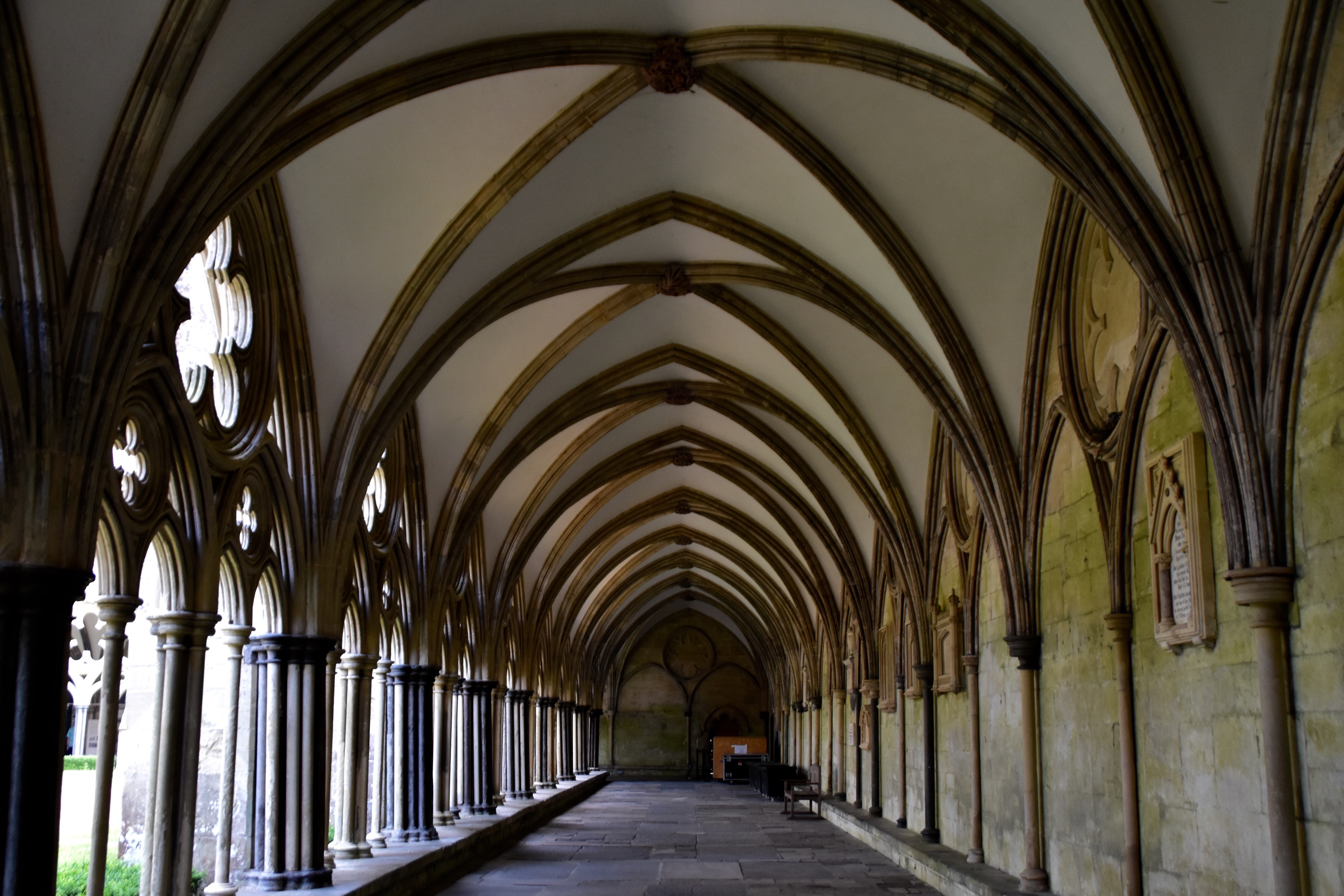
The Magna Carta
Looking at the floor plan of Salisbury Cathedral you can see the relatively small chapter house wherein is housed the best preserved of four surviving copies of the Magna Carta or Great Charter that King John signed (sealed actually) with his barons in 1215. Rightly considered the foundational document of British parliamentary democracy it is housed in this tent-like structure to protect it from sunlight.
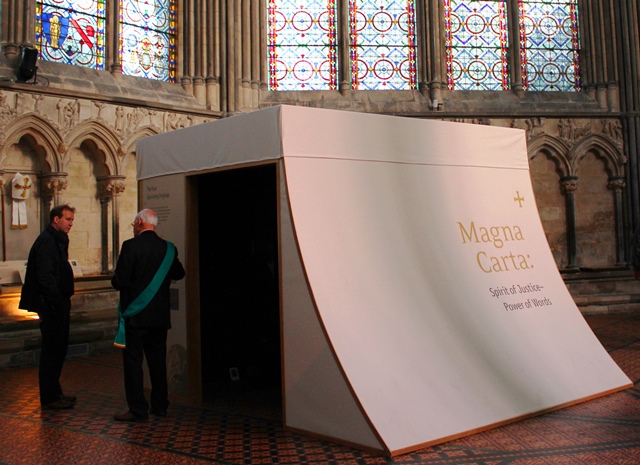
Not much to look at since it’s written in Latin on an old sheepskin parchment, it still carries a wallop in terms of the import of its significance to Western civilization. Seeing the Magna Carta is a fitting end to a tour of Salisbury Cathedral which ushered in the age of great Gothic church building in England as well as the nascence of democracy.

